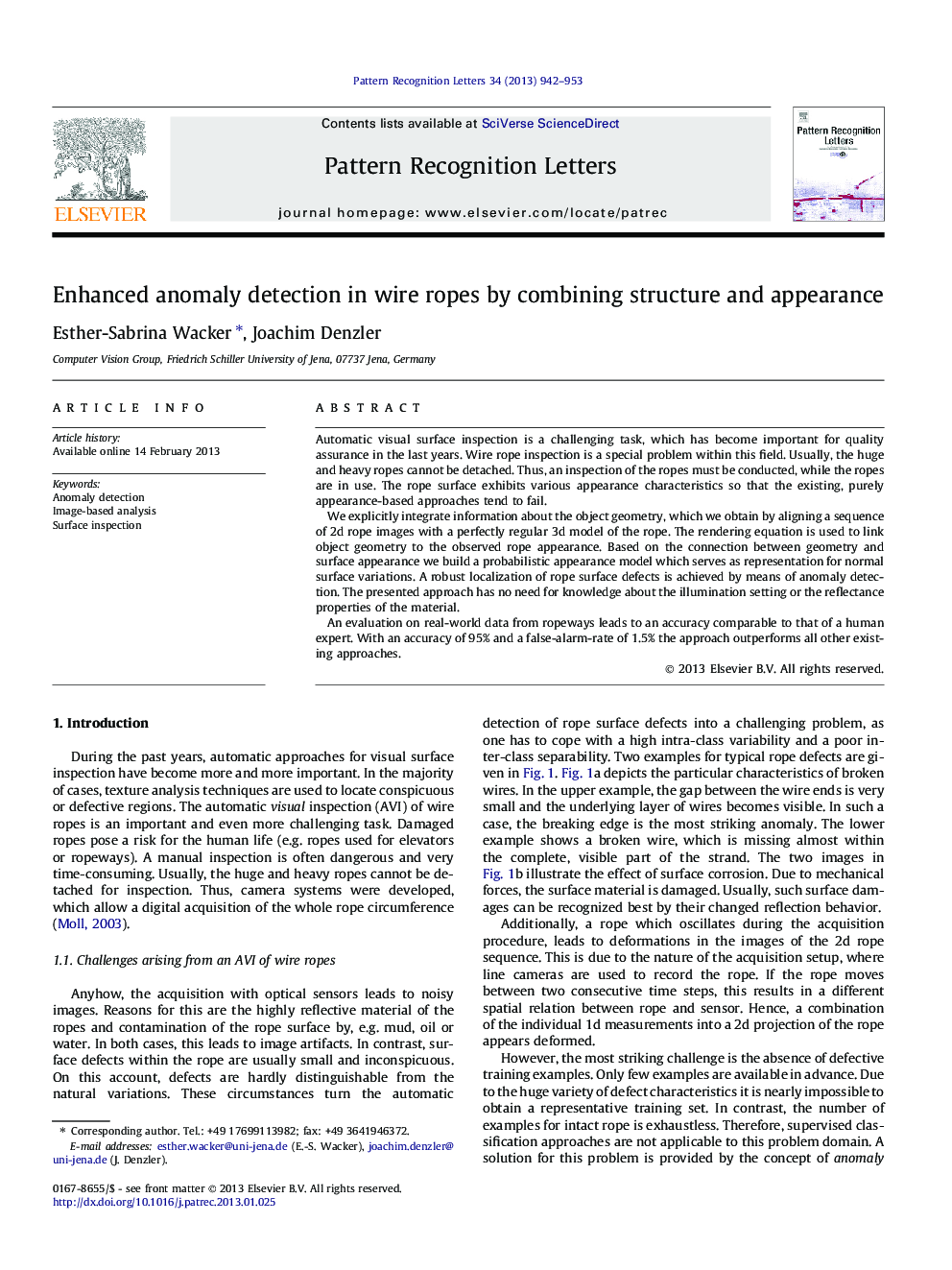| Article ID | Journal | Published Year | Pages | File Type |
|---|---|---|---|---|
| 534585 | Pattern Recognition Letters | 2013 | 12 Pages |
Automatic visual surface inspection is a challenging task, which has become important for quality assurance in the last years. Wire rope inspection is a special problem within this field. Usually, the huge and heavy ropes cannot be detached. Thus, an inspection of the ropes must be conducted, while the ropes are in use. The rope surface exhibits various appearance characteristics so that the existing, purely appearance-based approaches tend to fail.We explicitly integrate information about the object geometry, which we obtain by aligning a sequence of 2d rope images with a perfectly regular 3d model of the rope. The rendering equation is used to link object geometry to the observed rope appearance. Based on the connection between geometry and surface appearance we build a probabilistic appearance model which serves as representation for normal surface variations. A robust localization of rope surface defects is achieved by means of anomaly detection. The presented approach has no need for knowledge about the illumination setting or the reflectance properties of the material.An evaluation on real-world data from ropeways leads to an accuracy comparable to that of a human expert. With an accuracy of 95% and a false-alarm-rate of 1.5% the approach outperforms all other existing approaches.
► We combine structure and appearance information to detect defects in rope surfaces. ► We estimate the rope geometry by means of analysis-by-synthesis. ► The rope surface is modeled as joint distribution of structure and appearance. ► The defect localization is excellent and all existing approaches are outperformed. ► The model can be used to generate naturally looking rope.
